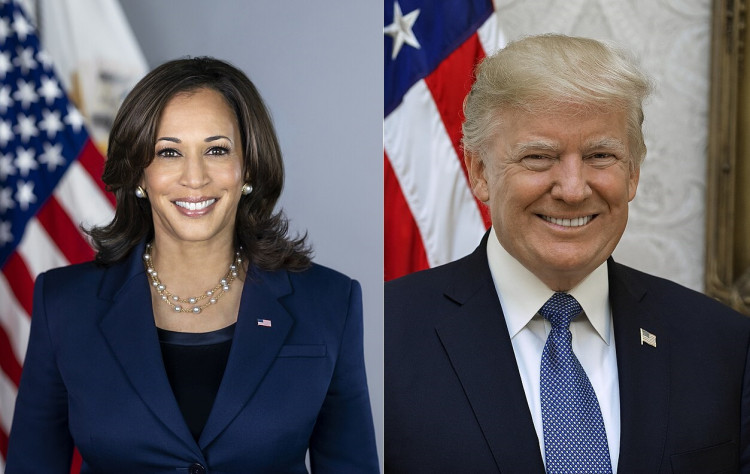In a significant shift ahead of the upcoming U.S. presidential election, former President Donald Trump has lost his lead in two crucial battleground states, according to a new poll. The latest data from Redfield & Wilton Strategies, conducted between August 12 and 15, reveals that Trump's previous advantages in Pennsylvania and Georgia have evaporated, with Vice President Kamala Harris now either tying or leading in these states.
The July poll by Redfield & Wilton had Trump ahead by 4 points in Pennsylvania and 5 points in Georgia. However, as the campaign season progresses, these leads have dwindled. The most recent polling indicates a deadlock in Georgia, with both candidates at 46 percent, while Harris has taken a narrow 2-point lead in Pennsylvania, sitting at 46 percent compared to Trump's 44 percent. This marks a significant shift in momentum, particularly in Pennsylvania, a state that Trump won in 2016 but lost in 2020.
Harris has also overtaken Trump in Wisconsin, where she now leads by 4 points, according to the latest figures. This is an improvement from the previous poll, which had both candidates tied at 43 percent. Meanwhile, Harris continues to maintain a steady lead in New Mexico and Minnesota, where she is ahead by 6 and 7 points, respectively.
However, the polling data is not universally positive for Harris. In Arizona, a key battleground, Trump has reversed Harris' lead, now holding a 1-point advantage at 44 percent to her 43 percent. Similarly, in Nevada, Trump has edged ahead by 1 point, overturning the previous tie. These fluctuations highlight the unpredictable nature of the current race, where both candidates are vying for dominance in critical swing states.
Despite these mixed results, Harris has consistently maintained a slight edge over Trump in national polling averages. According to FiveThirtyEight's poll tracker, she leads in several battleground states, including Wisconsin, Pennsylvania, Arizona, Michigan, Minnesota, Nevada, and New Mexico. Trump, on the other hand, holds the lead in Florida, Georgia, and North Carolina. This battleground state performance is pivotal, as it mirrors the 2020 election map where Joe Biden secured victory in several of these crucial states.
The volatility in these key states underscores the competitive nature of this election cycle. Harris has managed to reduce Trump's margins across most battlegrounds, a trend that has been evident since she replaced Biden on the Democratic ticket. The Redfield & Wilton poll, with its margin of error ranging from 2 to 4 percent, indicates that the race remains tight and could swing in either direction as the election approaches.
Harris' lead in national polls is supported by a Morning Consult survey of 11,501 registered voters, which places her 4 points ahead of Trump, at 48 percent to his 44 percent. However, despite her polling advantage, Harris faces skepticism from voters on key policy issues such as the economy, inflation, and jobs, where Republicans are still seen as more trustworthy by many. This highlights a challenge for Harris, who must not only maintain her lead but also convince voters that she can effectively address these critical issues.
Demographically, Harris polls strongest among young voters, women, and Black voters, where she enjoys a substantial lead. Trump, meanwhile, continues to draw significant support from male voters, those aged 45-64, and white voters without a college degree, although his support among this last group appears to have softened compared to previous elections.
The race remains particularly intense in seven battleground states-Arizona, Georgia, Michigan, Nevada, North Carolina, Pennsylvania, and Wisconsin-where both campaigns are focusing their efforts. Polls indicate that Harris leads in six of these states, with Trump holding firm in Nevada. This marks a dramatic reversal from earlier in the year when Trump was leading in most of these critical states.
As the election draws nearer, the polls suggest that Harris has gained momentum, capitalizing on the groundwork laid by the Biden administration. However, the race remains fluid, and with the volatility in battleground states, both campaigns will need to continue their efforts to sway undecided voters and secure a path to victory.






